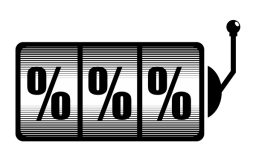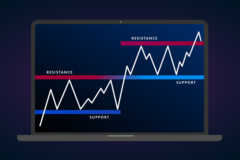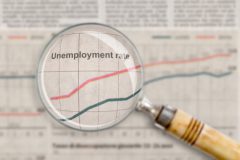By The Spy on
June 11, 2021
. One truth in economics is that mortgage rates typically follow inflation expectations, at least over time. That eventually poses a problem for borrowers, particularly after consumer prices take flight, like they have this year. U.S. core inflation, for example, recently jumped the most in four decades, 0.9% on a monthly basis. That “was well above what I and outside...
read more
By The Spy on
March 29, 2021
At the time this is being written (10:45 p.m. ET March 29), the top five most popular rates on our site are floating rates. It’s the first time we’ve seen this in weeks. And those numbers are based on tens of thousands of visitor clicks. Given that fixed rates usually dominate, what does this suggest? Well, among other things, it...
read more
By The Spy on
March 13, 2021
Fixed mortgage rates look like a runaway train. Thanks to Friday’s epic jobs report, the 5-year government bond yield, a leading indicator of fixed rates, closed the week above 1.00% for the first time in a year. That coincided with a barrage of new fixed-rate hikes at the big banks. Most major banks internally elevated their fixed rates this week...
read more
By The Spy on
February 6, 2021
5-year fixed mortgage rates tend to shadow 5-year government yields. And for most of nine months, the 5-year yield has been locked in a 21-basis-point range, a range so tight it was practically inconceivable prior to COVID. And, while no one has ever seen a range like this in our lifetimes, ultimately the 5-year yield will break out. When that...
read more
By The Spy on
November 17, 2020
—The Mortgage Report: Nov. 17— Remember that rate: 8 3/4%? Your average first-time buyer wouldn’t, as he/she would’ve been just seven years old at the time (1991). 8.75% was a tremendous 1-year fixed rate back then. But man, did it take a bite out of people’s budgets. Consider that on a standard $100,000 mortgage, you would’ve paid: $811 a month,...
read more
By The Spy on
August 14, 2020
The debate over fixed or variable rates never ends. But there are now two things that are far less debatable: 1) The Bank of Canada is telling us that prime rate has likely hit bottom, and 2) “Safer” 5-year fixed rates are now as low as “riskier” variable rates. (Safer, particularly if you choose a fair penalty lender.) Given the...
read more
By The Spy on
December 15, 2019
The difference between a lender’s cost to lend for 10 years versus five years is near an all-time low. Yet,10-year ratesremain too high to attract much interest. This chart below is one example of how competitive basic 10-year funding costs have become. It shows a long-term view of Canada Mortgage Bond (CMB) yields. Lenders use CMBs to fund insured 5-...
read more
By The Spy on
November 12, 2019
People are constantly hoping to time the rate market, despite how ineffective it may be. For the brave souls who try, here’s some interestingresearch from the U.S. Federal Reserve. One of its economists,Claudia Sahm, has documented a pattern in unemployment data. In her Fed report, she writes, “…Comparing the three-month average [U.S.] unemployment rate to its low over the prior...
read more
By The Spy on
November 10, 2019
If you knew where inflation was headed, you’d have a great chance of knowing where mortgage rates were headed. The latter rises and falls with the former. That’s why so many people try to predict inflation. Among the many who think they know where it’s going: The 100 senior Canadian businesspeople surveyed by the Bank of Canada every quarter 2...
read more
By The Spy on
November 1, 2019
Special to RateSpy, By John Bordignon, Capital Markets Consultant Earlier this year, while calling for innovation in the mortgage industry, Bank of Canada Governor Stephen Poloz discussed the need for mortgages longer than five years. Longer-term mortgages, he explained, would benefit both consumers and the Canadian financial system. Based on volumes to date, Poloz’s comments moved the needle only slightly...
read more
 log in
log in









